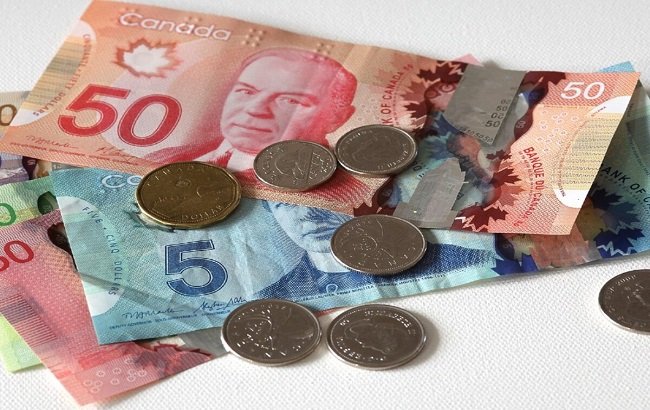When you think about the dólar canadiense a peso colombiano exchange rate, it’s not just a simple financial conversion. It’s a reflection of larger economic shifts and global trends. Whether you’re sending money, investing, or planning a trip to Colombia, understanding how the Canadian Dollar (CAD) exchanges for the Colombian Peso (COP) is essential. In this article, we will explore 5 crucial insights that you need to know to better navigate this important currency relationship.
Let’s dive into these powerful insights to help you stay ahead of the game and make informed decisions.
1. Understanding the Exchange Rate Dynamics of Dólar canadiense a peso colombiano
The exchange rate between the dólar canadiense a peso colombiano is influenced by various factors, from the economic performance of Canada and Colombia to global commodity prices and international market conditions. To understand how the exchange rate works, it’s important to consider the following:
Key Factors that Influence the Exchange Rate
- Commodity Prices: Colombia is a major exporter of oil, coffee, and coal. As the prices of these commodities rise or fall, the value of the Colombian Peso can shift in response. When oil prices increase, Colombia’s revenues from exports grow, potentially strengthening the Peso. The same applies to other commodities like coffee.
- Interest Rates: The Bank of Canada’s interest rate decisions directly impact the value of the Canadian Dollar. If the Canadian central bank raises interest rates, it tends to attract investment and strengthens the CAD. Conversely, when the Bank of Canada lowers rates, the CAD may weaken, affecting the exchange rate with the COP.
- Inflation Rates: Inflation is another significant factor that impacts the exchange rate. If Colombia faces higher inflation compared to Canada, the Peso could weaken against the Canadian Dollar. Conversely, if Canadian inflation is higher, the CAD could lose value.
- Political Stability: The political landscape of both Canada and Colombia can influence the exchange rate. A stable political environment in either country tends to strengthen that country’s currency, while political instability can have the opposite effect.
- Global Economic Conditions: The broader global economic environment affects exchange rates. For example, shifts in international trade agreements, oil prices, or economic crises can influence both the CAD and COP.
How the Global Economy Affects the Dólar canadiense a peso colombiano
The value of the dólar canadiense a peso colombiano is not determined in isolation. It is interconnected with global economic conditions. For example, a global recession could lead to a decline in demand for oil and coffee, which could weaken the Colombian Peso. Similarly, if Canada’s economy performs well, the CAD could become stronger compared to the COP.
How You Can Stay Ahead of Market Trends
If you’re frequently exchanging currencies or dealing with international business involving Canada and Colombia, staying updated on the economic trends of both countries is essential. By regularly checking financial news, market reports, and economic data releases, you can predict possible shifts in the dólar canadiense a peso colombiano exchange rate.
2. Why Understanding the Dólar canadiense a peso colombiano Matters for Travelers
Whether you’re visiting Colombia for business or pleasure, knowing the dólar canadiense a peso colombiano exchange rate is essential for effective budgeting. Exchange rates can have a significant impact on your purchasing power during your trip.
Why the Exchange Rate Affects Your Travel Budget
The dólar canadiense a peso colombiano rate can significantly affect how much money you have while traveling. For example:
- Stronger CAD, Lower Costs in Colombia: If the Canadian Dollar is strong compared to the Colombian Peso, you will get more pesos for each Canadian dollar you exchange. This means that your trip to Colombia could be more affordable, as goods and services will cost less in comparison to Canada.
- Weaker CAD, Higher Costs in Colombia: If the Canadian Dollar is weak compared to the Peso, your purchasing power will be diminished. This can make traveling in Colombia more expensive, as you’ll get fewer pesos for your Canadian dollars.
For example, let’s say you want to convert CAD into COP for a trip to Colombia. If the exchange rate is favorable, you may find that the cost of food, transportation, and accommodation is lower than you expected. On the other hand, a weaker CAD means you’ll need to budget more carefully.
Best Practices for Currency Exchange During Travel
- Avoid Airport Exchange Kiosks: While it may be convenient to exchange money at the airport, these places often offer poor rates. It’s best to use local banks or ATMs for a more favorable exchange rate.
- Use Credit Cards and ATMs: Credit cards with no foreign transaction fees and ATMs tend to offer better exchange rates. If you’re traveling frequently, it’s worthwhile to check with your bank for the best rates on withdrawals.
- Monitor Exchange Rates: Before traveling, monitor the dólar canadiense a peso colombiano rate so you can exchange your money at an optimal time.
3. The Role of the Colombian Economy in Shaping the Dólar canadiense a peso colombiano Rate
The Colombian economy plays a crucial role in the strength of the dólar canadiense a peso colombiano exchange rate. Economic indicators such as growth rates, inflation, and government policies directly impact the value of the Peso.
Key Factors Influencing the Colombian Peso
- Trade Balance: Colombia’s trade balance (exports versus imports) plays a significant role in determining the value of the Colombian Peso. A positive trade balance (exports exceeding imports) tends to strengthen the Peso. As a major exporter of oil, coffee, and other commodities, Colombia’s trade performance has a direct impact on the dólar canadiense a peso colombiano rate.
- Government Debt: High levels of government debt can weaken a country’s currency. If Colombia’s government accumulates significant debt, it can undermine confidence in the Peso and lead to a lower exchange rate.
- Foreign Investment: Colombia’s ability to attract foreign investment can affect the Peso’s strength. A growing economy with strong foreign investment tends to result in a stronger currency, while economic uncertainty can lead to a decline in the Peso.
- Inflation: Inflation is another factor that directly impacts the value of the Peso. Higher inflation rates in Colombia compared to Canada can erode the value of the Peso and make the dólar canadiense a peso colombiano rate less favorable for those converting Canadian Dollars into Colombian Pesos.
How to Stay Informed About Colombia’s Economy
Keeping track of Colombia’s economic performance is crucial for understanding the strength of the Peso. Reports from the Colombian central bank and major international organizations like the International Monetary Fund (IMF) can provide valuable insights into the country’s economic conditions.
4. How to Make the Most of the Dólar canadiense a peso colombiano for Your Business
For businesses that import or export goods between Canada and Colombia, the dólar canadiense a peso colombiano exchange rate is crucial for profitability. Understanding how the exchange rate affects business transactions is essential for minimizing risk and maximizing profits.
Importing from Colombia to Canada
When importing goods from Colombia, a favorable exchange rate can make your purchases more affordable. A stronger Canadian Dollar means that Colombian products, such as coffee, textiles, or agricultural goods, will be cheaper for Canadian businesses.
Exporting from Canada to Colombia
For businesses exporting goods to Colombia, a weaker Canadian Dollar can make Canadian products more expensive in Colombia. This can lead to reduced demand for your products. However, if the CAD is strong, Canadian goods become more expensive, which could result in fewer sales.
Hedging Currency Risks
To protect against unfavorable exchange rate fluctuations, businesses can use currency hedging strategies. This allows businesses to lock in a favorable exchange rate in advance, providing more certainty about the cost of imports and exports.
Practical Tips for Businesses:
- Regularly Monitor Exchange Rates: To stay competitive, businesses should keep an eye on the dólar canadiense a peso colombiano rate and adjust their pricing strategy accordingly.
- Use Forward Contracts: Forward contracts allow businesses to lock in an exchange rate for future transactions, reducing the risk of currency fluctuations.
- Consult with Financial Experts: For larger transactions, it may be wise to consult with a financial advisor who specializes in foreign exchange.
5. How to Track and Predict the Dólar canadiense a peso colombiano Exchange Rate
Being able to track and predict the dólar canadiense a peso colombiano exchange rate is invaluable for businesses, travelers, and investors alike. Here are a few tips on how to stay ahead of exchange rate movements.
Tools for Tracking Exchange Rates
- Currency Conversion Websites: Websites like XE and OANDA provide up-to-date exchange rates and allow you to set alerts for when rates reach your desired threshold.
- Financial News Platforms: Keep an eye on financial news sources such as Bloomberg, Reuters, or the Financial Times for updates on global economic conditions that might affect the dólar canadiense a peso colombiano rate.
- Google Currency Converter: Google offers a quick and simple way to check exchange rates by simply typing “CAD to COP” into the search bar.
How to Predict the Exchange Rate
Predicting exchange rates is not an exact science, but by understanding the factors that influence the dólar canadiense a peso colombiano, you can make educated guesses about future trends. Pay attention to global market conditions, interest rates, and key economic indicators from both Canada and Colombia.
FAQs
1. How often does the Dólar canadiense a peso colombiano rate change?
The dólar canadiense a peso colombiano rate changes frequently due to fluctuations in global markets, political events, and economic data releases. It’s important to monitor exchange rates regularly to get the most accurate information.
2. Where can I exchange Canadian Dollars for Colombian Pesos?
You can exchange Canadian Dollars at local banks, currency exchange offices, and ATMs in Colombia. For the best rates, use local ATMs or visit banks for your currency exchange needs.
3. Does the Dólar canadiense a peso colombiano rate impact my international payments?
Yes, if you are sending or receiving money between Canada and Colombia, the exchange rate can significantly impact the amount of money exchanged. Understanding the dólar canadiense a peso colombiano rate can help you maximize your payments.
4. What is the best time to exchange Dólares Canadiense a Pesos Colombianos?
The best time to exchange your money is when the CAD is stronger than the COP. Keeping an eye on economic trends and global market conditions can help you identify the right moment to exchange.
Stay informed and take advantage of these insights on the dólar canadiense a peso colombiano exchange rate. By understanding the key factors that influence this rate, you can make smarter financial decisions and avoid costly mistakes.
For those interested in great deals on groceries, you can always check the latest Circulaire Super C Semaine Prochaine for some fantastic offers.




